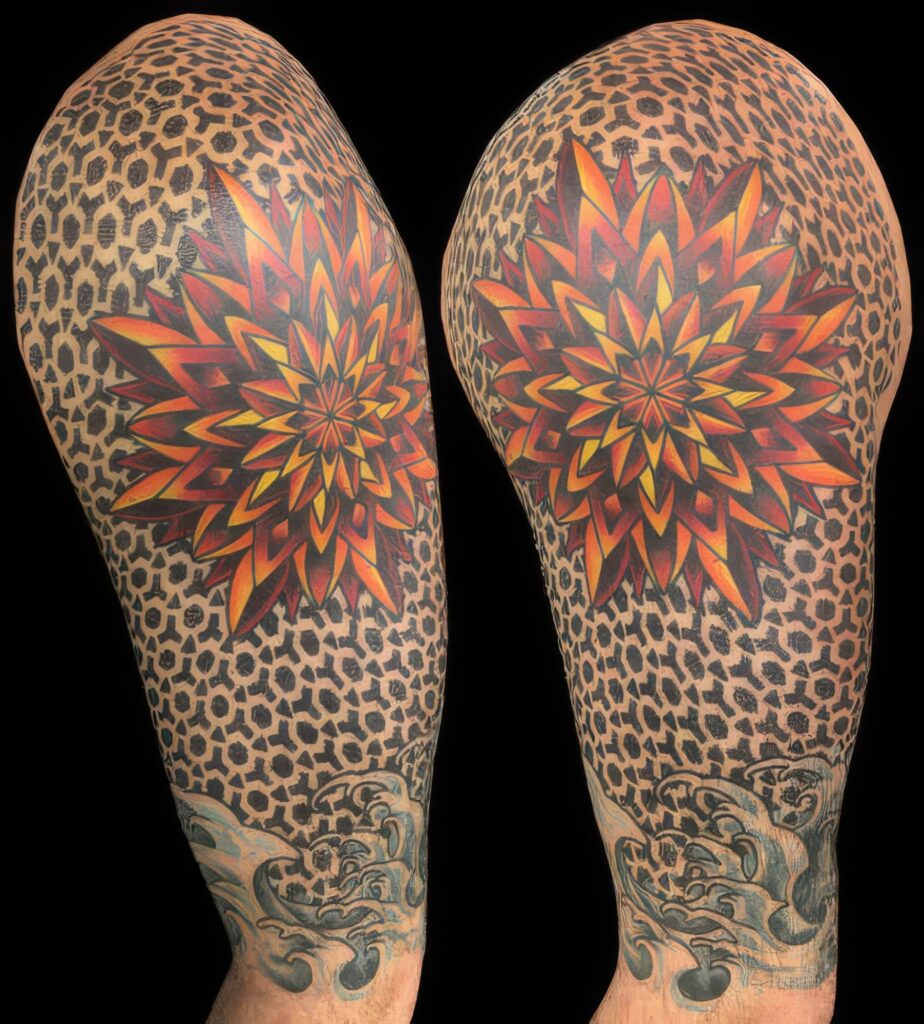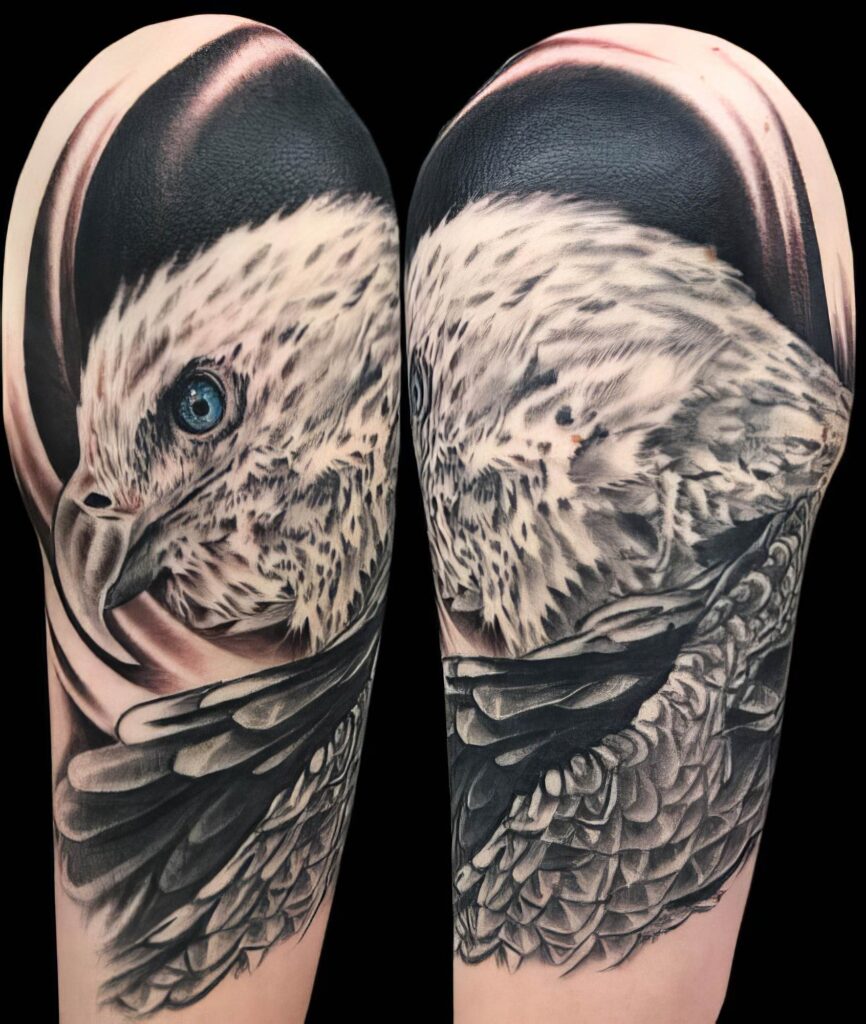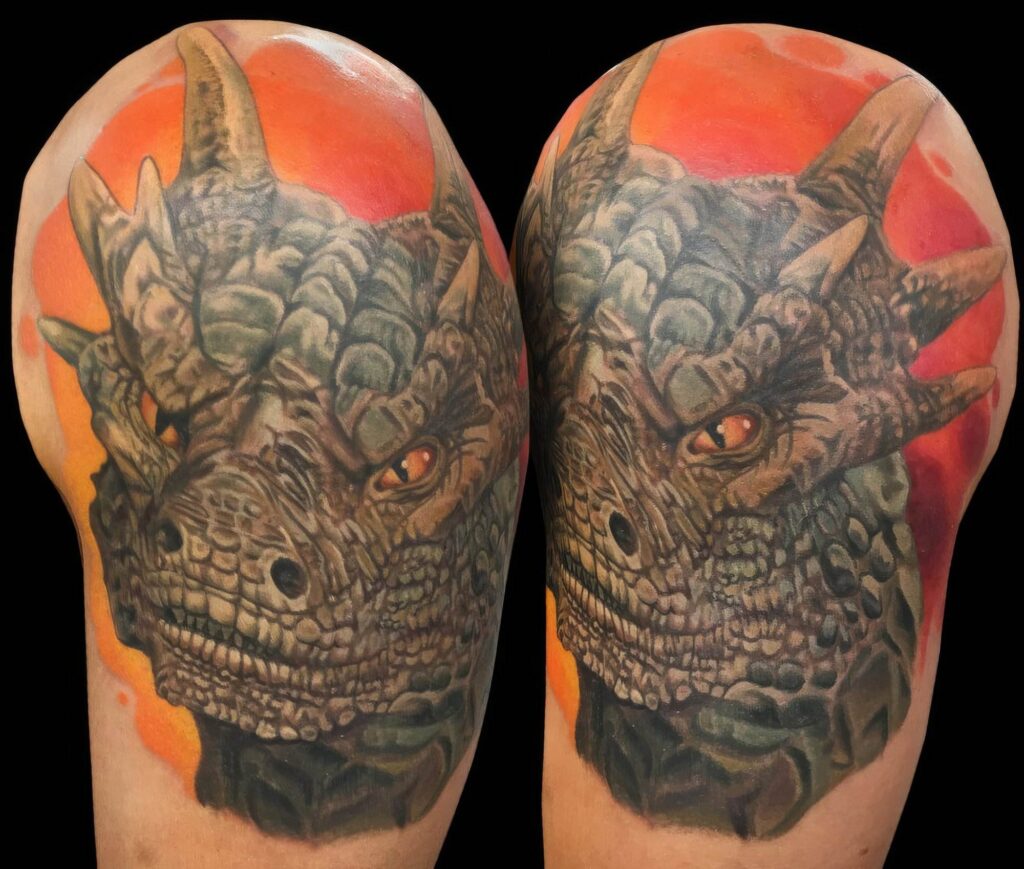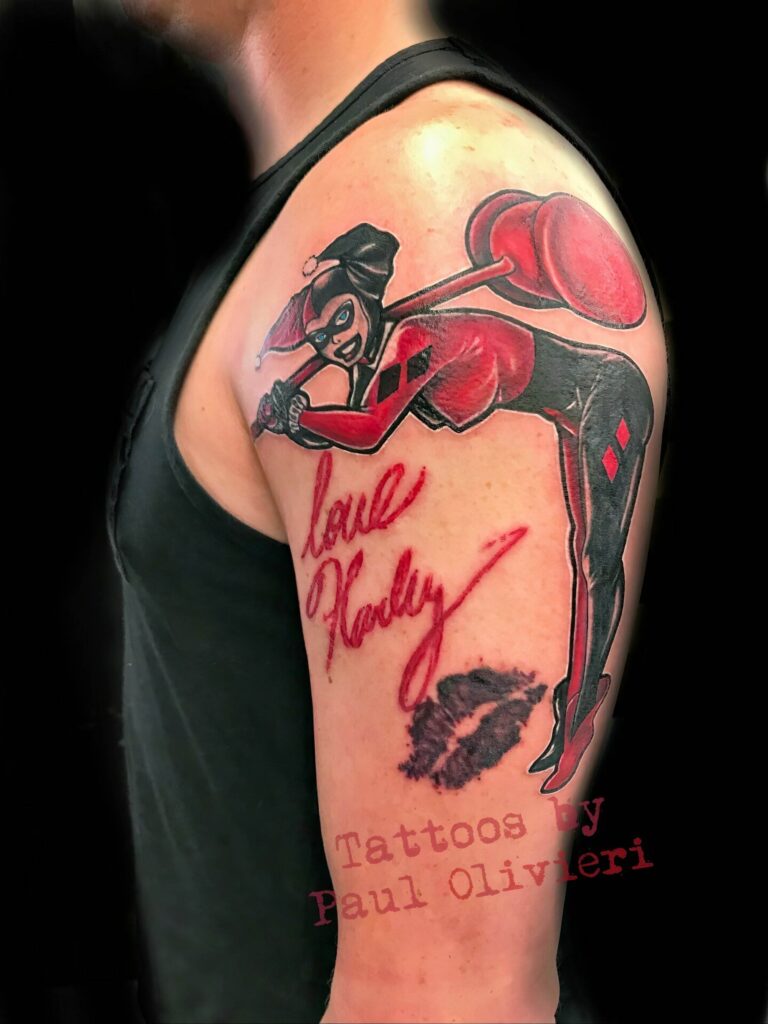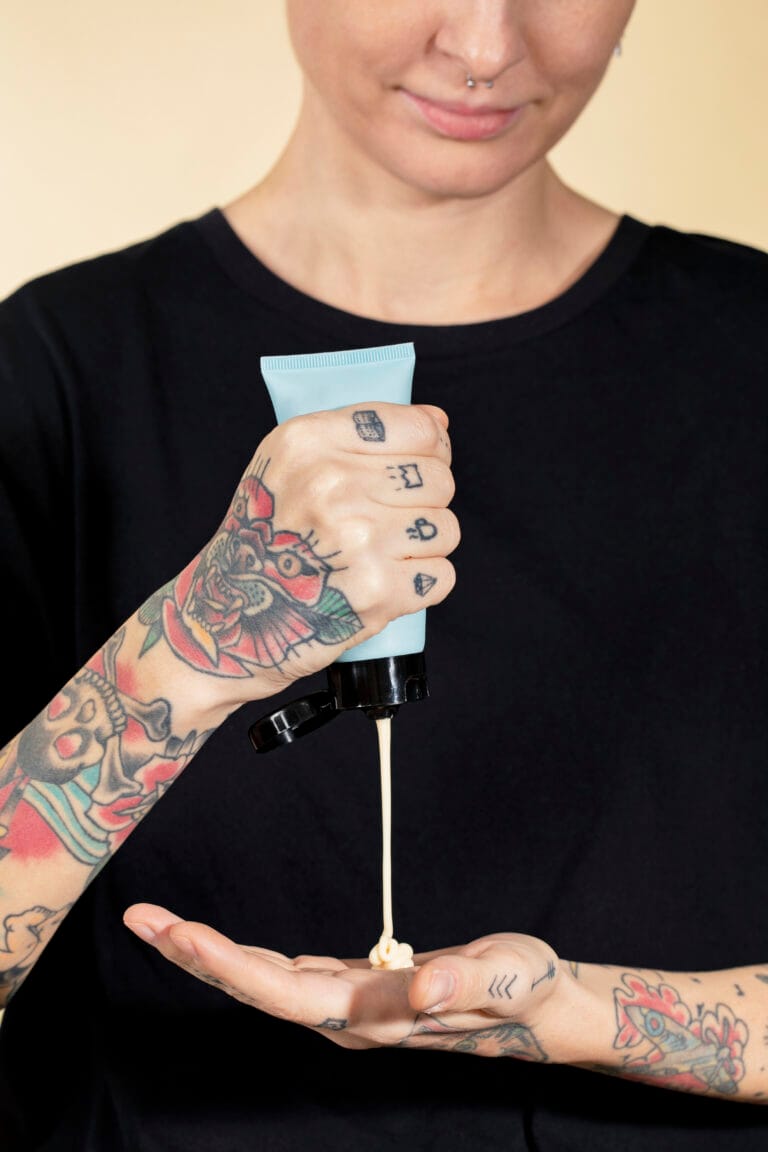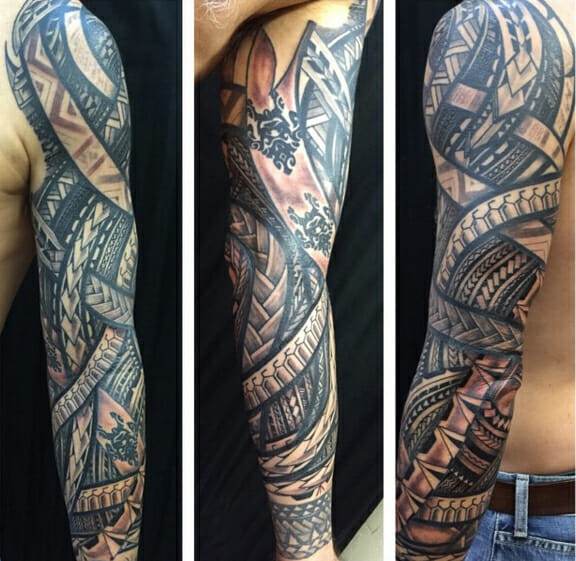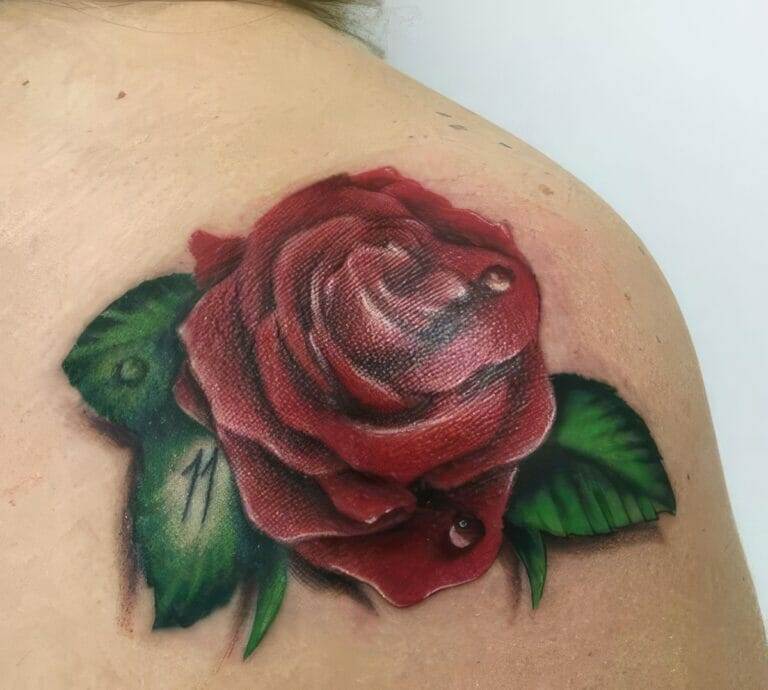
Introduction
The Importance of Tattoo Aftercare
Tattoo aftercare is a critical aspect that can determine the longevity and vibrancy of your body art. A tattoo represents not only a personal expression but also a commitment to the inked image. Proper aftercare ensures that the design heals well and maintains its colors for years to come. Neglecting to care for a fresh tattoo can lead to fading, infection, or scarring, drastically altering the look and integrity of your artwork. Investing time and effort into aftercare immediately following the tattooing process is essential. The initial healing period typically lasts from 2 to 3 weeks, but understanding that skin may still be sensitive, requires vigilance for several months beyond that. Key aftercare practices include:
- Keeping the tattoo clean: Regular washing with unscented soap is crucial.
- Applying ointments: Using recommended ointments helps create a protective layer over the tattoo.
- Avoiding scratching or picking: This can disrupt the healing process and lead to scars.
By adhering to a solid aftercare regimen, individuals can ensure that their tattoos not only heal properly but also remain as gorgeous as the day they were inked.
Common Factors that Can Affect Tattoo Healing
Several factors can influence the healing process of a tattoo—some controllable and others not. Awareness of these factors can prepare individuals for optimal healing conditions, leading to better outcomes. Here are a few essential elements that can affect tattoo healing:
- Skin type: Different skin types (oily, dry, sensitive) may heal at different rates and react differently to the healing process.
- Tattoo location: Areas with significant movement or friction, such as elbows or knees, may require extra care.
- Health and hydration: A well-hydrated body heals better. Staying hydrated supports overall skin health, impacting how well the tattoo looks as it heals.
- Environmental factors: External elements like humidity and temperature can either aid or hinder the healing process. For instance, dry air may cause the tattoo to dry out and flake.
- Lifestyle choices: Habits such as smoking, excessive alcohol consumption, or inadequate sleep can impede recovery, leading to longer healing times.
Understanding these factors allows tattoo enthusiasts to adapt accordingly, enhancing the healing process. By being mindful of aftercare and potential challenges, individuals can enjoy their tattoos in excellent condition, ensuring they feel proud of their artistic choice through the years.
Sun Exposure and Tattoos


Effects of Sun Exposure on Tattoos
As people embrace their tattoos as beautiful forms of self-expression, it’s crucial to understand the impact of sun exposure on these intricate works of art. Tattoo ink, while designed to be long-lasting, can be significantly affected by sunlight, leading to several detrimental effects. Prolonged exposure to UV rays can cause fading, blurring, and even discoloration of vibrant colors, turning stunning designs into dull shadows of their former selves. Here are some common effects of sun exposure on tattoos:
- Fading colors: Bright colors like reds, yellows, and greens are particularly susceptible to UV damage, potentially fading within the first few months to years if consistently exposed.
- Blurring: Over time, sun exposure can cause the tattoo to lose its sharpness and clarity, making intricate designs appear muddled.
- Skin damage: Beyond the tattoo itself, UV rays can cause sunburn on the skin, leading to peeling and irritation, which further complicates the condition of the tattoo.
- Increase in aging signs: Sun exposure accelerates skin aging, which can also contribute to the aging appearance of tattoos, making them look older than they are.
Understanding these risks highlights the importance of taking proactive steps to protect your tattoos from the sun’s potentially harmful rays.
Tips for Protecting Tattoos from Sun Damage
To safeguard your tattoos from sun damage and maintain their vibrancy, consider these practical tips:
- Use a high-quality sunscreen: Applying a broad-spectrum sunscreen with a high SPF on the tattooed area is essential, especially during extended outdoor activities. Look for a product that specifies “water-resistant” for optimal protection.
- Wear protective clothing: When spending time in the sun, opt for clothing that can cover your tattoos. Long-sleeved shirts and pants made from tightly woven fabrics provide an excellent barrier against UV rays. Darker colors often offer better protection too.
- Seek shade when possible: Whenever you’re outside, try to stay in shaded areas, especially during peak sun hours between 10 AM and 4 PM. Hats with brims can also provide additional protection for tattooed areas on the face and neck.
- Limit direct sun exposure: If you can, reduce the time your tattoos are exposed to the sun. When lying on the beach or lounging by the pool, drape a towel over your tattoos or adjust your position to minimize exposure.
- Reapply sunscreen regularly: Even with sunscreen, it’s essential to reapply every two hours and immediately after sweating or swimming for maximum effectiveness.
By following these protective measures, individuals can ensure that their tattoos continue to look vibrant and beautiful throughout the years. Taking care of your tattoo goes hand in hand with the initial aftercare and can be easily integrated into daily routines, making it easier to enjoy and showcase your artwork proudly!
Choosing the Right Sunscreen for Tattoos
Understanding SPF and PA Ratings
Choosing the right sunscreen is essential in protecting your tattoos from harmful UV rays, but navigating the variety of products on the market can be daunting. One of the first steps is understanding the SPF and PA ratings that indicate a product’s effectiveness against sun damage.
- SPF (Sun Protection Factor):This rating measures how well a sunscreen protects the skin against UVB rays, which are primarily responsible for sunburn. A higher SPF means more protection. For example:
- SPF 30 blocks approximately 97% of UVB rays.
- SPF 50 blocks around 98% of UVB rays.
While choosing a sunscreen, going for at least SPF 30 is commonly recommended, especially for tattooed skin, as it provides adequate protection without being overly greasy or heavy.
- PA Rating:This designation measures protection from UVA rays, responsible for skin aging and tattoo fading. The PA system, ranging from PA+ to PA++++, indicates the level of UVA protection:
- PA+: Some protection.
- PA++: Moderate protection.
- PA+++: High protection.
- PA++++: Extremely high protection.
For the best results, selecting a sunscreen labeled as “broad spectrum,” which means it protects against both UVA and UVB rays, is crucial for maintaining vibrant tattoos and skin health overall.
Ingredients to Avoid in Sunscreen for Tattoos
While many sunscreens boast impressive protection, not all ingredients are suitable for tattooed skin. Some can lead to fading or skin irritation. It’s essential to be mindful of the following ingredients to avoid:
- Alcohol: Frequently found in sunscreens for its quick-drying properties, alcohol can dry out the skin, which is detrimental to tattoo healing and vibrancy.
- Fragrances: Scented sunscreens can cause allergic reactions or irritation, particularly on sensitive skin. Opting for fragrance-free products reduces this risk.
- Oxybenzone: While effective, this chemical can penetrate the skin and may have potential hormonal effects. Therefore, many choose to avoid it in favor of mineral-based sunscreens with zinc oxide or titanium dioxide.
- Parabens: Often used as preservatives, parabens can cause skin irritation in some individuals. It’s best to select paraben-free options for tattoo protection.
- Octinoxate: Similar to oxybenzone, octinoxate is another chemical that can lead to allergic reactions or skin sensitivity, especially for freshly inked tattoos.
By paying attention to these ingredients and prioritizing quality sunscreen, individuals can effectively safeguard their tattoos from the sun’s harmful rays. It’s all about balance—finding a sunscreen that provides robust protection while also being gentle on tattooed skin. Incorporating this knowledge into summer routines can be liberating, allowing individuals to enjoy the sun while keeping their body art looking as pristine as ever!
Hydrating and Moisturizing Tattoos
Benefits of Keeping Tattoos Hydrated
Keeping tattoos well-hydrated is one of the most critical aspects of maintaining their beauty and integrity. Just like any part of your skin, tattoos require moisture to heal properly and continue looking vibrant. Proper hydration not only enhances the appearance of the tattoo but also promotes healthy skin overall. Here are some key benefits of keeping tattoos hydrated:
- Prevents Fading: Adequate moisture helps lock in ink vibrancy, reducing the risk of colors fading over time. This is especially true for brighter inks that tend to lose their intensity without proper care.
- Minimizes Itching and Peeling: New tattoos can be itchy as they heal. Keeping the skin moisturized alleviates discomfort, helping to avoid scratching, which can lead to scarring or uneven healing.
- Promotes Better Healing: Hydrated skin repairs itself more effectively. Moisturizing helps create a barrier against infection and other irritants while encouraging the skin to heal in a smooth and consistent manner.
- Enhances Tattoo Appearance: A well-moisturized tattoo looks fresh, smooth, and vibrant. It helps to maintain that “just-inked” appearance, even months after getting the tattoo.
To make the most of your tattoo care, incorporating a solid moisturizing routine will ensure your tattoos look stunning and your skin remains healthy.
Recommended Products for Tattoo Moisturizing
When it comes to moisturizing products, choosing the right items is essential for tattoo care. Below are some favored options that can keep your ink looking pristine:
- Tattoo Aftercare Ointments: Specially formulated for tattoo care, these ointments provide intense hydration while also protecting your tattoo from bacteria. Look for products with natural ingredients like shea butter and coconut oil.
- Fragrance-Free Moisturizers: Opt for unscented lotions or creams to avoid irritation. Ingredients such as aloe vera and oatmeal are excellent for soothing the skin while providing moisture.
- Natural Oils: Oils like jojoba, almond, or vitamin E oil can be highly effective in providing hydration. They absorb quickly and nourish the skin without clogging pores, which can help in the long run.
- Hydrating Gel: Lightweight, cooling gels with hyaluronic acid or aloe vera can provide hydration without weighing the skin down. These are perfect for warmer weather or if you prefer a lighter texture.
- Sunscreens for Moisturization: As previously mentioned, a broad-spectrum sunscreen with moisturizing properties can also serve as two-in-one protection against sun damage and dryness.
To ensure effectiveness, it’s essential to apply these products regularly, especially after bathing or spending time in the sun. A consistent routine not only benefits the appearance of your tattoos but also promotes overall skin health. In summary, keeping tattoos well-hydrated is a vital component of tattoo care. By investing in quality moisturizers and following a regular application routine, individuals can enjoy impressive, lasting tattoos for years to come. The effort pays off, ensuring that your ink remains a radiant testament to your personal expression.
Clothing Choices for Tattoo Protection
Best Clothing Fabrics for Tattoos
When it comes to protecting tattoos from sun exposure, clothing plays a significant role. The right choice of fabrics not only offers a physical barrier against harmful UV rays but can also be a stylish way to keep your ink safe. Here are some of the best fabrics to consider for tattoo protection:
- UPF-rated Fabrics: Clothing designed with Ultraviolet Protection Factor (UPF) rating offers built-in protection against UV radiation. Look for garments labeled with UPF 30 or higher for optimal defense. Lightweight and breathable, these fabrics allow for comfort while shielding your tattoos.
- Cotton: This classic fabric is breathable and soft, making it a popular choice for everyday wear. While not inherently UV-blocking, tightly woven cotton can provide a certain level of protection. Opt for darker colors for added defense; they typically absorb more UV radiation compared to lighter shades.
- Linen: Excellent for hot weather, linen is both lightweight and breathable. Its natural fiber properties allow for airflow while providing decent UV protection, especially when worn loosely.
- Nylon and Polyester: These synthetic fabrics are often found in athletic wear. They are lightweight, durable, and provide some UV protection when tightly woven. Moreover, many brands create stylish options that feel as good as they look!
- Chambray: Similar to denim in appearance but lighter, chambray shirts offer a chic way to protect your tattoos while remaining comfortable. The dense weave helps provide a barrier against UV rays.
Choosing the right clothing fabric is an easy yet effective way to safeguard your tattoos against sun exposure. A well-planned wardrobe can help maintain your ink’s vibrancy without sacrificing style.
How to Cover Up Tattoos in the Sun
Sometimes, even with the right fabric, additional coverage is needed to ensure optimal protection for your tattoos when you’re out in the sun. Here are some practical strategies to effectively cover up tattoos:
- Layering: Wearing layers can provide an extra layer of protection. A long-sleeve shirt over a tank top or a light jacket can shield your tattoos from direct sunlight.
- Using Accessories: Keep a stylish wide-brimmed hat handy. It not only protects tattooed skin on your face and neck but also adds a touch of flair to your look. Long scarves can also wrap around tattooed areas, providing sun protection while making a fashion statement.
- Temporary Cover: For special occasions or when you need temporary coverage, consider skin-safe body makeup designed to cover tattoos. Ensure it is waterproof and contains SPF for added protection.
- Sun Sleeves: These innovative products are designed to protect arms from UV rays while allowing for airflow. They often come in various styles and colors, making it easy to integrate into your wardrobe.
- Be Mindful of Timing: If possible, limit sun exposure during peak hours (10 AM to 4 PM), when UV rays are the strongest. Scheduling outdoor activities during early morning or late afternoon can help minimize exposure and keep your tattoos safe and healthy.
By thoughtfully choosing clothing fabrics and utilizing clever covering techniques, tattoo enthusiasts can protect their body art while enjoying the outdoors. This proactive approach ensures that your tattoos remain as vibrant and beautiful as the day they were inked, allowing you to wear your art with pride!

